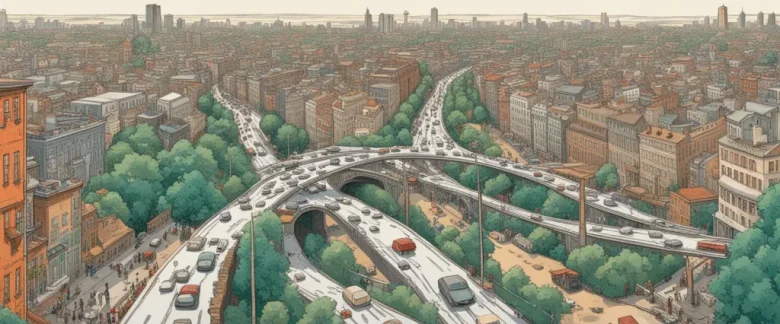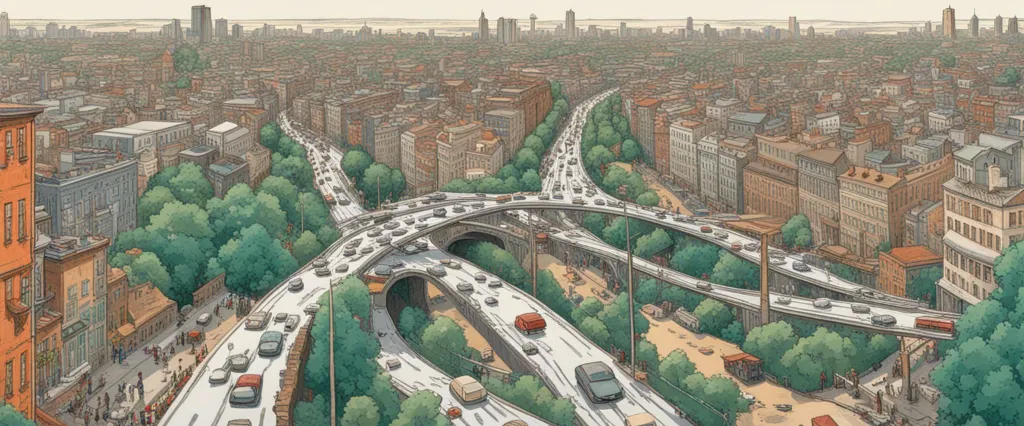In “Country Driving,” Peter Hessler takes readers on an engaging journey through the rapidly changing landscape of contemporary China. Exploring the country’s vast countryside, bustling cities, and the intricate challenges faced by its people, Hessler’s narrative provides a profound insight into China’s economic development and its profound impact on the lives of its citizens. As a renowned journalist and author, Hessler combines his deep understanding of Chinese culture, history, and language with his keen observations to offer a unique perspective on the complexities of one of the world’s most influential nations. Throughout his narrative, Hessler paints a vivid picture of China’s remarkable transformation, capturing the spirit of the country and its people in an honest and thought-provoking manner.
Chapter 1: The Great Wall and the Rural-to-Urban Migration
Chapter 1 of Country Driving by Peter Hessler, titled “The Great Wall and the Rural-to-Urban Migration,” explores the author’s journey along the Great Wall of China and the impact of China’s rural-to-urban migration.
Hessler starts his journey at Shanhaiguan, the eastern terminus of the Great Wall, and travels westward. Along the way, he encounters various parts of the Wall, heavily restored or crumbling, serving as a physical and symbolic representation of China’s history and culture. As he drives, he notices the rapid urban development surrounding the Wall, replacing the once rural landscape.
Hessler then shifts his focus to the huge rural-to-urban migration happening in China. He visits regions affected by this phenomenon, such as Sancha in Hebei Province, where the author meets various migrant workers who have left their rural origins to work in the cities. These migrants are driven by the desire for a better life, economic opportunities, and modernity, leaving behind their traditional farming lifestyles. However, they often face constant challenges and discrimination in urban areas due to their status as “temporary residents,” which affects their integration into society.
The chapter also explores the impact of China’s economic boom on small towns like Sancha. As people leave to pursue urban dreams, these towns experience a decline in population and vitality. Hessler interviews local residents who express concerns about their community’s future and the difficulty of maintaining traditions and social structures in the face of rapid change.
In summary, Chapter 1 of “Country Driving” highlights the author’s exploration of the Great Wall and its changing surroundings, as well as his examination of China’s rural-to-urban migration and its impacts on both individuals and communities. Hessler sets the stage for a deeper exploration of China’s modernization and the consequences it brings for its people.
Chapter 2: Driving through the Countryside
In Chapter 2 of “Country Driving” by Peter Hessler, the author embarks on a road trip through the countryside of China, specifically the northwest region of Beijing. Hessler’s aim is to explore the impact of China’s rapid urbanization on rural communities.
The chapter begins with Hessler renting a vehicle and venturing into the Chinese countryside, filled with endless highways and villages. He encounters a wide range of individuals, including truck drivers, road builders, and farmers. Through conversations and observations, Hessler learns about their struggles and aspirations.
Hessler focuses on the phenomenon of “driving schools” that have sprung up all across China. These driving schools attract countless young migrant workers seeking job opportunities in urban areas. These workers, mostly hailing from rural villages, are required to obtain a driver’s license to secure better employment prospects.
The author’s encounters with driving school students and instructors shed light on the intense pressures they face. The students invest considerable time and money to obtain their licenses while also navigating regulatory challenges. Hessler reflects on the competitiveness and the pressing need for driving skills in this rapidly evolving society.
Moreover, Hessler documents the transformation of the Chinese countryside due to the influx of new infrastructure, such as highways and bridges. The construction projects have not only provided employment opportunities but have also brought about changes in local culture, customs, and even the architecture of villages.
Overall, Chapter 2 demonstrates the impact of urbanization on rural China, as seen through the lens of driving schools and the changing landscape. Hessler’s journey through the countryside offers a vibrant and insightful portrayal of the struggles and resilience of the people living on the fringe of China’s rapid economic development.
Chapter 3: The Rise of the Automobile Industry
Chapter 3: The Rise of the Automobile Industry focuses on the rapid growth and evolution of the automobile industry in China. Peter Hessler explores various aspects of this industry, including its impact on the economy, infrastructure, and society as a whole.
The chapter begins with Hessler recounting his experience of landing a job at a car factory in the city of Lishui. Through his firsthand experience, he provides insights into the inner workings of a Chinese automobile factory and the challenges faced by both workers and management. Hessler describes the fast-paced environment and the strict production targets, leading to intense pressure and hard work.
Hessler delves into the historical perspective of the automobile industry in China, highlighting its slow evolution from being a luxury for the elite to becoming more accessible to the average citizen. He explains how the industry took off in the 1980s and witnessed exponential growth in subsequent decades. Hessler also outlines the role of government policies and incentives in promoting the industry and making China the largest automobile market in the world.
Moreover, Hessler examines the impact of the automobile industry on China’s infrastructure development. He highlights the vast network of highways and the construction boom of car-related facilities such as gas stations and repair shops. The author explores the importance of cars in transforming rural areas, providing new job opportunities and enhancing mobility for the rural population.
Additionally, Hessler delves into the societal implications of the automobile industry. He discusses how car ownership is seen as a status symbol and a measure of success in Chinese society. However, this newfound mobility has also resulted in increased traffic congestion, road accidents, and environmental concerns. Hessler touches upon the cultural shift from bicycles to cars and its impact on the traditional Chinese way of life.
In summary, Chapter 3 explores the rise and impact of the automobile industry in China. Through his own experiences and observations, Hessler provides valuable insights into the growth of the industry, its influence on infrastructure development, and the social changes it has brought to Chinese society.
Chapter 4: The Three Gorges Dam and Its Consequences

Chapter 4 of “Country Driving” by Peter Hessler focuses on the Three Gorges Dam and its consequences. Hessler undertakes a road trip along the Yangtze River to explore the impact of this massive dam project that he would later dub “The Dammed River” due to the extensive impact it has had on the region.
Hessler describes the construction of the Three Gorges Dam and its significance as the world’s largest hydroelectric power station. He narrates his experience of visiting the site, witnessing the enormous scale of the dam and the displacement of hundreds of thousands of people as a result. Hessler also reflects on the way the Chinese government and media portray the project as an important symbol of national pride and technological prowess.
He then delves into the environmental consequences of the dam. Hessler meets with locals, often boatmen whose livelihoods have been severely affected due to the rising water levels and the overall transformation of the landscape. He explains how the dam has disrupted ecosystems, causing changes in river flow, sedimentation patterns, and an increase in landslides and erosion.
Furthermore, Hessler examines the social and cultural impact of the dam. He visits relocated communities that were forced to abandon their ancestral homes and adapt to new lives in high-rise apartment buildings. Many locals struggle to find employment in the areas they were relocated to, prompting a sense of loss and displacement.
Overall, Chapter 4 of “Country Driving” provides an insightful exploration of the Three Gorges Dam and its far-reaching consequences. It sheds light on not only the physical effects on the environment but also the social and cultural effects on the people living in the region.
Chapter 5: The Transformation of a Village
Chapter 5: The Transformation of a Village in the book “Country Driving” by Peter Hessler explores the gradual urbanization and modernization occurring in a small rural village in China called Sancha. Hessler, an American journalist, spends time in Sancha to observe and understand the significant changes taking place in the lives of the villagers.
The chapter begins with Hessler’s arrival in Sancha, where he is initially viewed with suspicion by the villagers but eventually gains their trust. He describes the village as a remote and isolated place, with subsistence farming being the primary livelihood.
As the Chinese government starts promoting road construction and development, the once inaccessible village experiences changes that transform the lives of its residents. Hessler witnesses the construction of a new road, which brings in outside influences and connects the village to the larger urban centers. With road access, transportation becomes more accessible, and this opens up opportunities for the villagers to engage in new economic activities such as migrant labor and running small businesses.
Hessler’s narrative focuses on one particular villager named Kong Fansen, who becomes his close friend. Kong decides to build a trucking business using loans and connections. His success signifies the changing dynamics of the village, as more people are exposed to the possibilities of economic advancement and start to break away from traditional farming practices.
The chapter also highlights the challenges and setbacks experienced by Sancha as urbanization progresses. Hessler mentions environmental issues caused by increased industrialization, land disputes arising from new land regulations, and the struggles faced by farmers forced to adapt to a rapidly changing society.
Overall, Chapter 5 provides a glimpse into the village’s journey of transformation, showcasing the effects of modernization on the lives and aspirations of the villagers. Through Hessler’s observations, readers gain insight into the complexities and consequences of China’s rapid development.
Chapter 6: The Urbanization of China
Chapter 6: The Urbanization of China from the book “Country Driving” by Peter Hessler explores the rapid urbanization and the transformative changes happening in China’s cities. The chapter focuses on the city of Lishui in Zhejiang Province and the experiences of the author during his time spent there.
Hessler begins by describing the economic boom that has fueled China’s urbanization, with millions of rural migrants flocking to cities in search of better opportunities. He highlights Lishui’s transformation from a small town into a bustling city, reflecting a broader trend in China. The author offers vivid descriptions of the dizzying rate of construction, the changing skyline cluttered with cranes, and the energetic pace of life in the urban areas.
The chapter delves into the struggles faced by the migrants who leave their rural homes in search of work. Hessler interviews a taxi driver, Mr. Lei, who shares his story of leaving his village to find employment opportunities in Lishui. Through Mr. Lei’s narrative, the author explores the difficulties faced by migrants, from adapting to urban life to dealing with the challenges of finding decent accommodation and steady work.
Hessler also provides insights into the social changes accompanying urbanization. He attends a wedding in Lishui and observes the impact of urban living on traditional customs and family structures. He discusses how urbanization is reshaping notions of marriage and personal relationships as people navigate the changing dynamics of city life.
Overall, Chapter 6 of “Country Driving” offers a vivid portrayal of China’s rapid urbanization. It highlights the challenges and opportunities brought about by this shift, giving readers a deeper understanding of the complexity and scale of the urbanization phenomenon in contemporary China.
Chapter 7: The New Silk Road
Chapter 7 of “Country Driving” by Peter Hessler, titled “The New Silk Road,” explores the tremendous transformation that China has undergone due to its booming economy and infrastructure development. Hessler begins the chapter with his journey along the G109 highway, which runs parallel to the ancient Silk Road. This road symbolizes the modernization and economic progress taking place in China.
As Hessler travels along the G109 highway, he encounters various towns and cities that have been greatly impacted by the country’s development. He stops in the town of Guyuan, which was once a sleepy farming village but has now transformed into a bustling trading hub due to its strategic location on the G109. The town’s main street is filled with shops selling goods from all over China, showcasing the newfound prosperity brought about by the increased connectivity with the rest of the country.
Hessler also explores the phenomenon of ghost towns along the Silk Road. These are massive, newly constructed cities that remain largely uninhabited. Despite being equipped with elaborate architecture and modern infrastructure, they have failed to attract residents. Hessler attributes this to the inefficient planning and an oversupply of real estate, resulting in uninhabited cities that resemble ghost towns.
The author then turns his attention to the city of Lanzhou, where a massive transportation hub is being constructed. The city is seen as a crucial link between the east and west, and the government is investing heavily in developing Lanzhou. Hessler delves into the challenges faced by the government in managing such massive infrastructure projects and ensuring the economic viability of cities like Lanzhou.
The chapter concludes with Hessler’s observation that while the economic progress has brought development and opportunities, it has also led to the erosion of traditional culture and a growing wealth gap. He highlights how the price of prosperity in China is often the loss of history and identity, as the rapid urbanization sweeps away old neighborhoods and customs.
In summary, Chapter 7 of “Country Driving” explores the transformation brought about by China’s economic progress along the G109 highway. It showcases the newfound prosperity in towns like Guyuan but also addresses the challenges of uninhabited ghost towns and the potential loss of traditional culture in the face of rapid development.

Chapter 8: China’s Future and the Road Ahead
Chapter 8 of “Country Driving” by Peter Hessler, titled “China’s Future and the Road Ahead,” explores the author’s predictions and reflections on the future of China’s economic development and its implications for the nation and its people. Hessler contemplates the impact of China’s rapid urbanization and its consequences for the stability and sustainability of the country.
The chapter begins with Hessler recounting his visit to a small village in northern China, in which he observes the traditional way of life and reflects on the potential loss of this rural culture with the wave of urbanization. Hessler argues that the push for economic development has caused a severe disconnect between the urban and rural areas, leading to a widening income gap and increased social inequality.
As Hessler drives across China, he notices the construction boom and the proliferation of new highways, representing the rapid modernization taking place in the country. However, he also acknowledges the negative impacts of this development, such as the displacement of farmers and the destruction of historical sites. Hessler suggests that China’s economic success comes at the expense of its precious cultural heritage.
Moving forward, Hessler predicts that China’s economy will face challenges due to unsustainable growth patterns and environmental degradation. He discusses the increasing social unrest caused by pollution, corruption, and inequality, and highlights the growing importance of social media in expressing dissent and organizing protests.
Despite these challenges, Hessler remains optimistic about China’s future, envisioning a shift towards more sustainable development and a return to valuing cultural preservation. He concludes that while China must overcome numerous obstacles on its path ahead, the nation’s resilience and determination will play a crucial role in shaping its future.
After Reading
In “Country Driving” by Peter Hessler, the author embarks on a journey through various parts of China, exploring the profound changes brought about by economic development and urbanization. Through his encounters with Chinese citizens, from small-town entrepreneurs to migrant workers and government officials, Hessler provides a comprehensive and nuanced understanding of the country’s evolving society. Unveiling the impact of rapid transformation on individuals and communities, the book sheds light on the challenges and opportunities faced by China and its people. With vivid storytelling and insightful analysis, Hessler captures the complexities of modern China, leaving readers with a compelling account of a nation navigating its way through a remarkable and tumultuous period of change.
1. “Wild Swans: Three Daughters of China” by Jung Chang: Similar to “Country Driving,” this book provides a personal and insightful exploration of China’s history and society. It follows the lives of three generations of women in China, offering a perspective on the country’s tumultuous transformation from the early 20th century to modern times.
2. “Factory Girls: From Village to City in a Changing China” by Leslie T. Chang: This nonfiction book focuses on a group of young women who leave their rural homes in search of employment in China’s industrial cities. Like “Country Driving,” it delves into the complexities of social change and economic development in contemporary China.
3. “Oracle Bones: A Journey Through Time in China” by Peter Hessler: Another book by Peter Hessler, “Oracle Bones” combines memoir and journalism to explore China’s dynamic history, culture, and modernization. It offers a captivating narrative that intertwines personal experiences with insightful observations about China’s political and cultural climate.
4. “The River at the Center of the World: A Journey Up the Yangtze, and Back in Chinese Time” by Simon Winchester: In this travelogue, Simon Winchester traces the Yangtze River’s path across China while uncovering the country’s complex past and present. It shares similarities with “Country Driving” in terms of exploring China’s geography, history, and the impact of cultural and economic changes on the nation.
5. “Behind the Beautiful Forevers: Life, Death, and Hope in a Mumbai Undercity” by Katherine Boo: Although set in India, this narrative nonfiction book resonates with the themes found in “Country Driving.” It provides an intimate and humanizing account of life in an underprivileged community, offering parallels to the social challenges faced by people in China’s rural areas during economic transitions.




